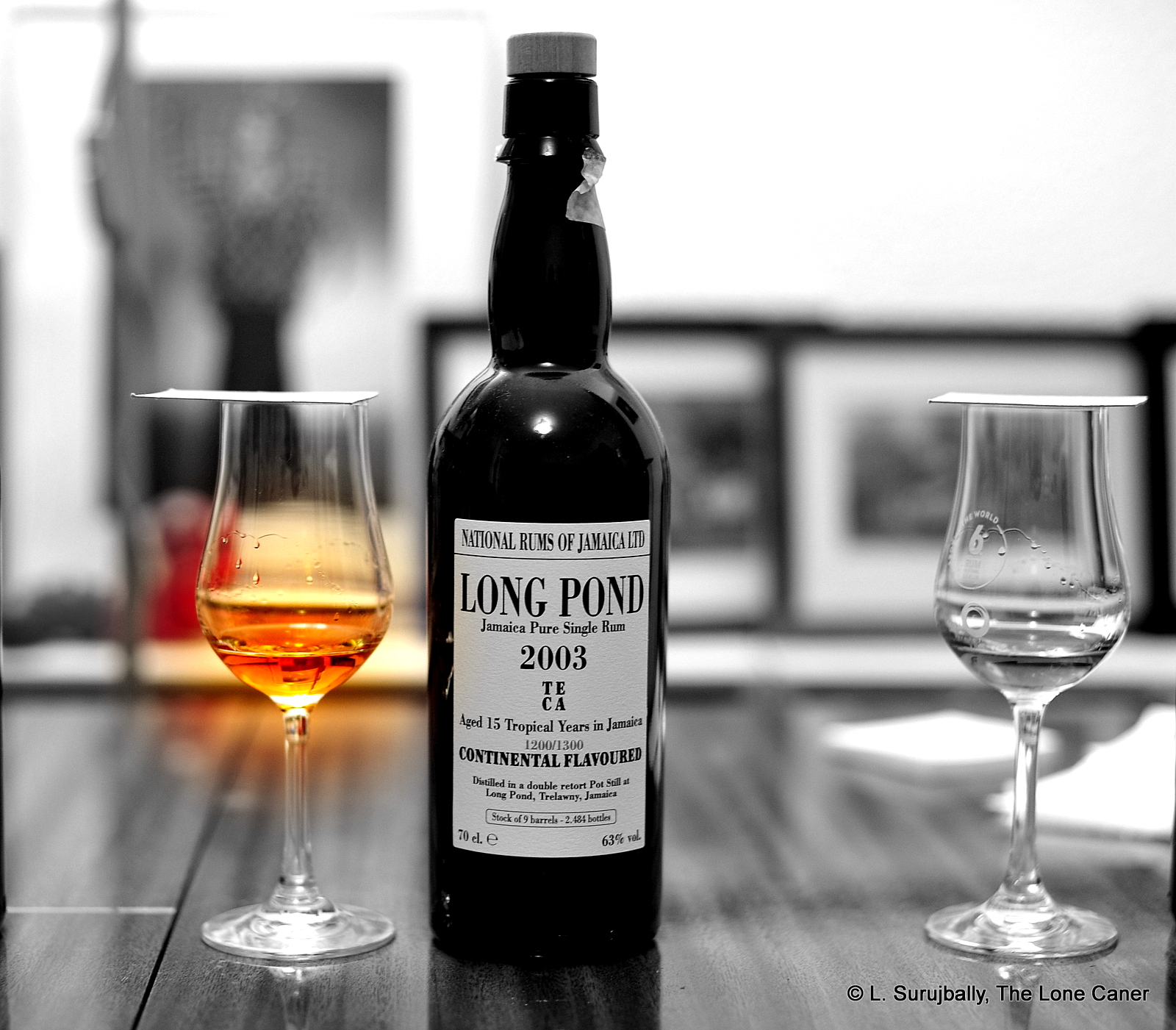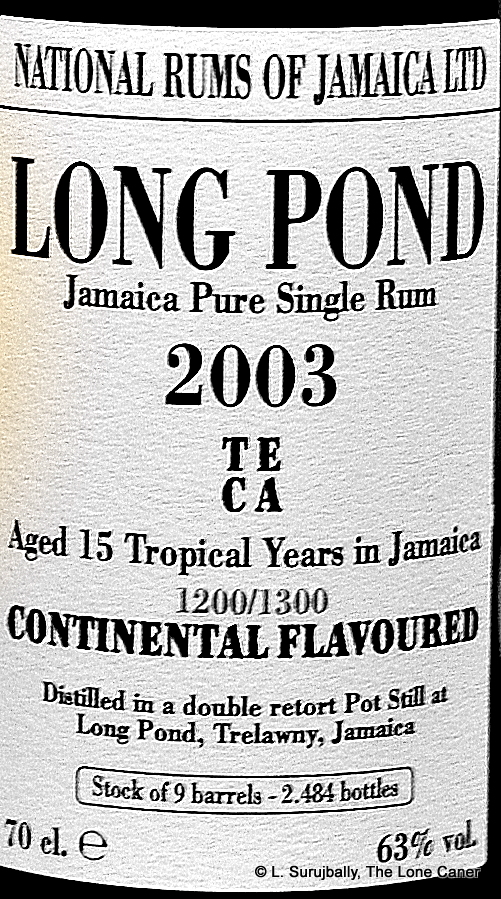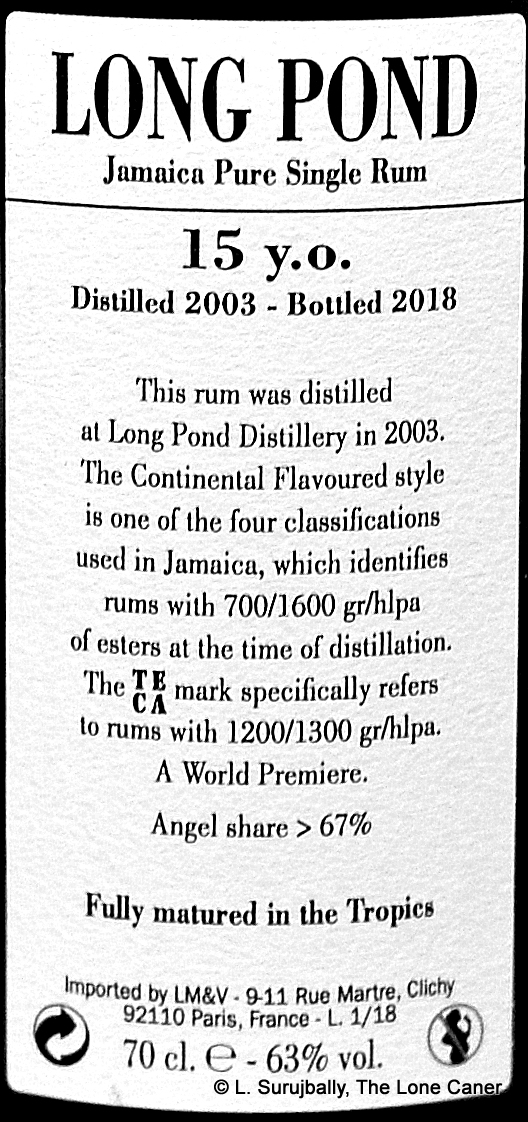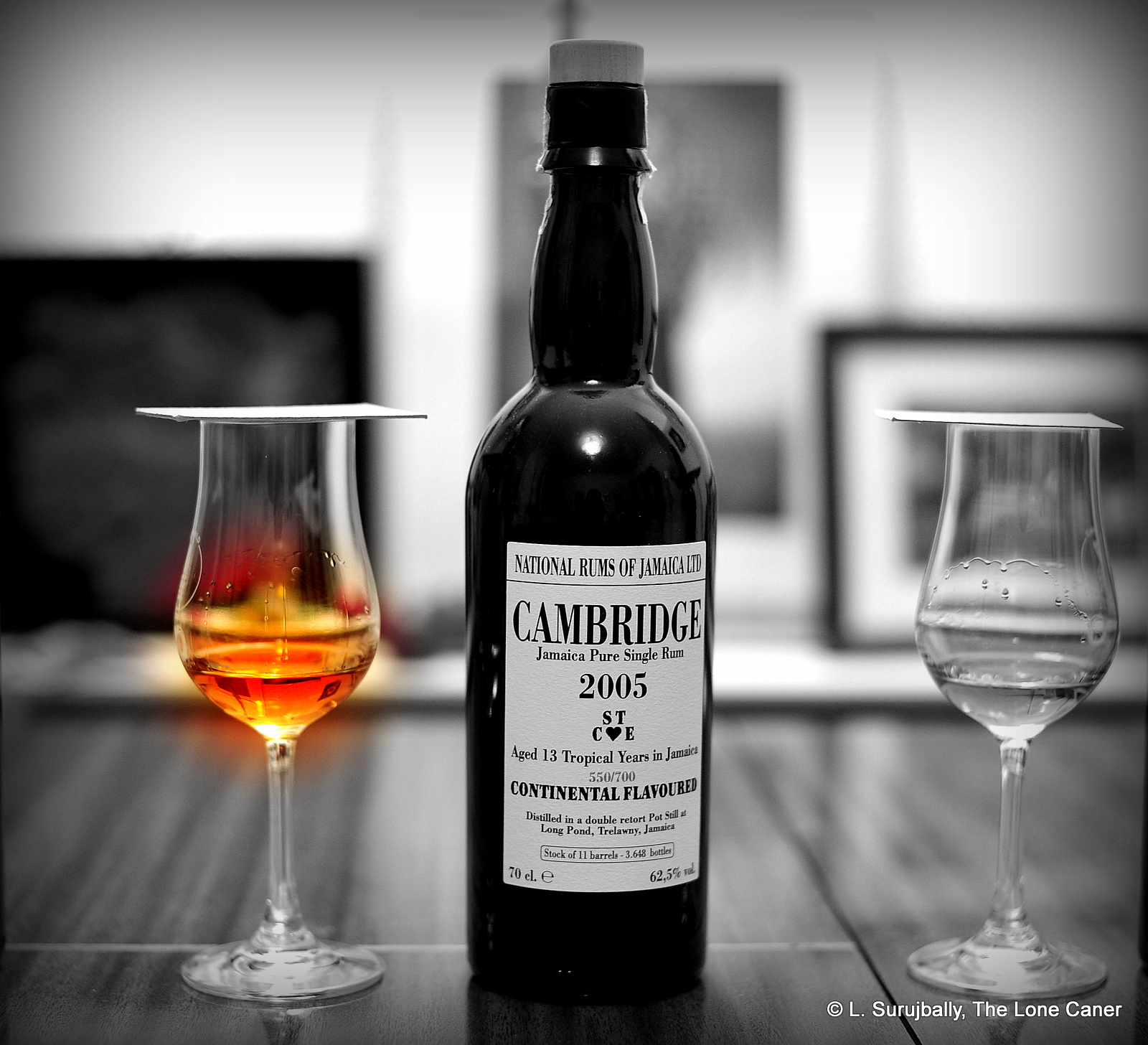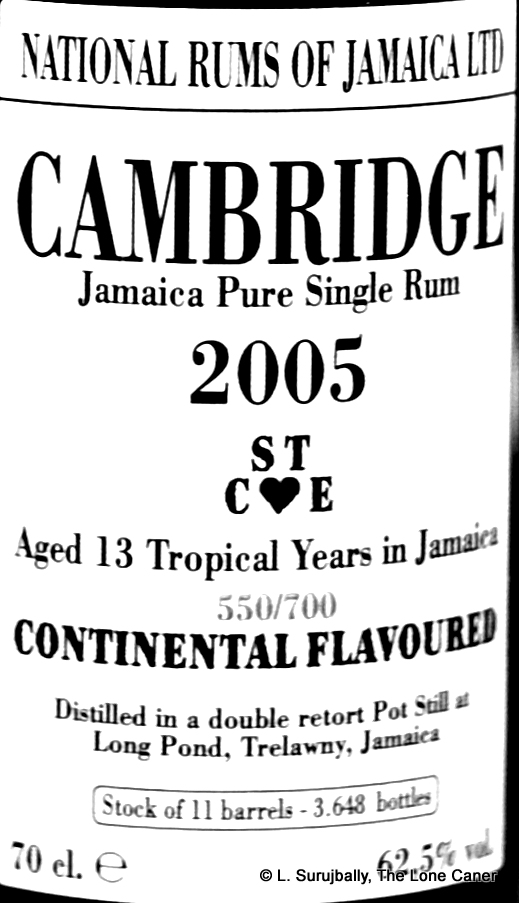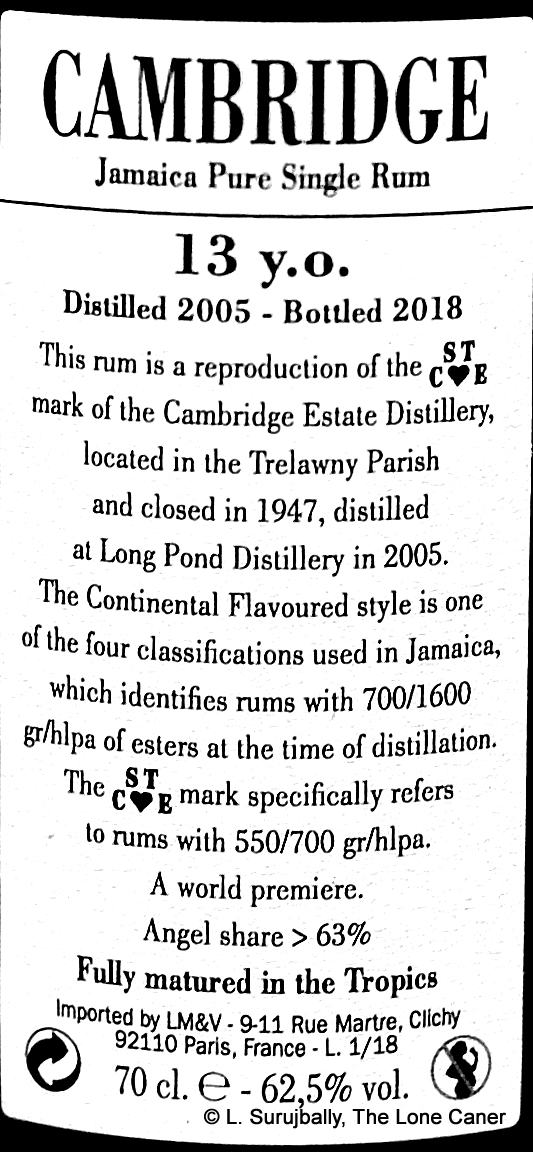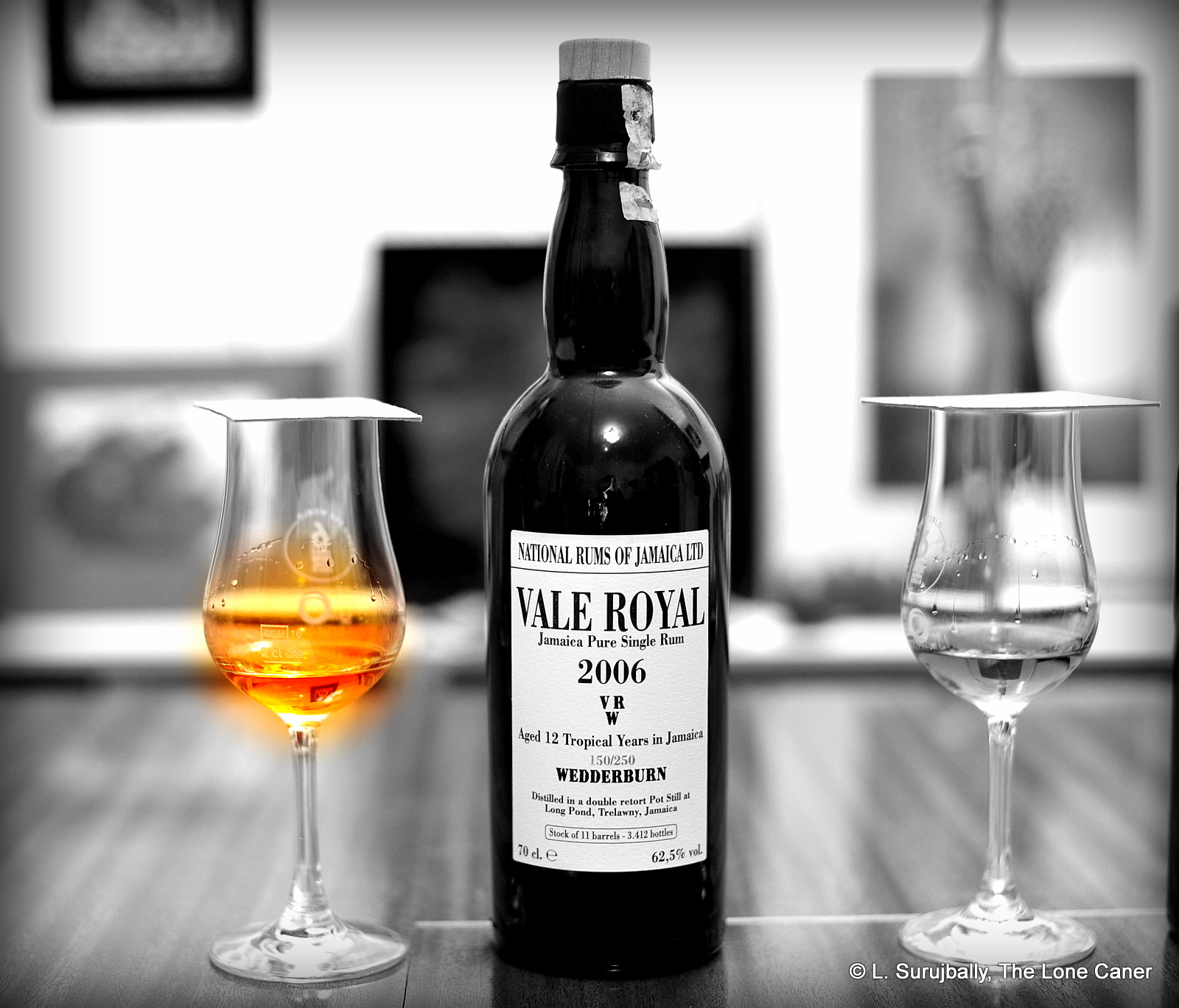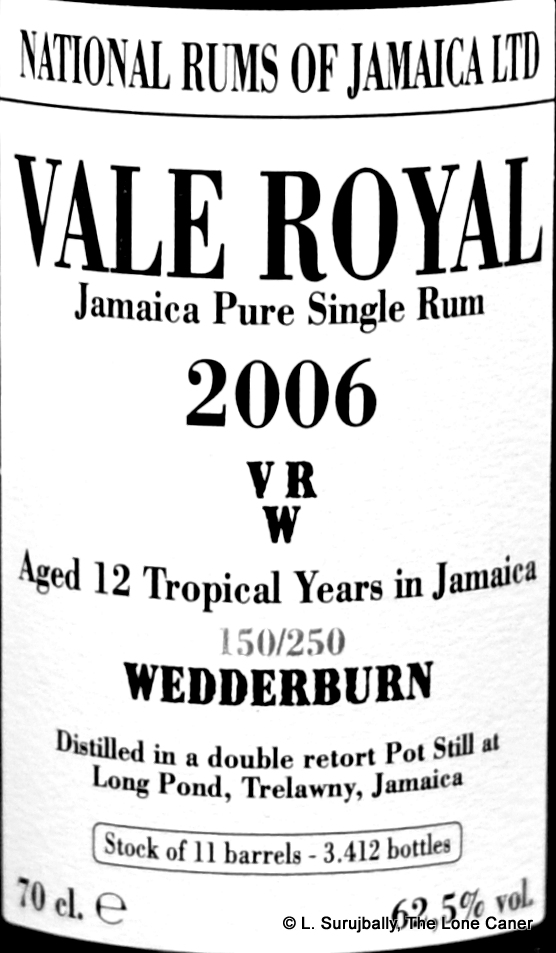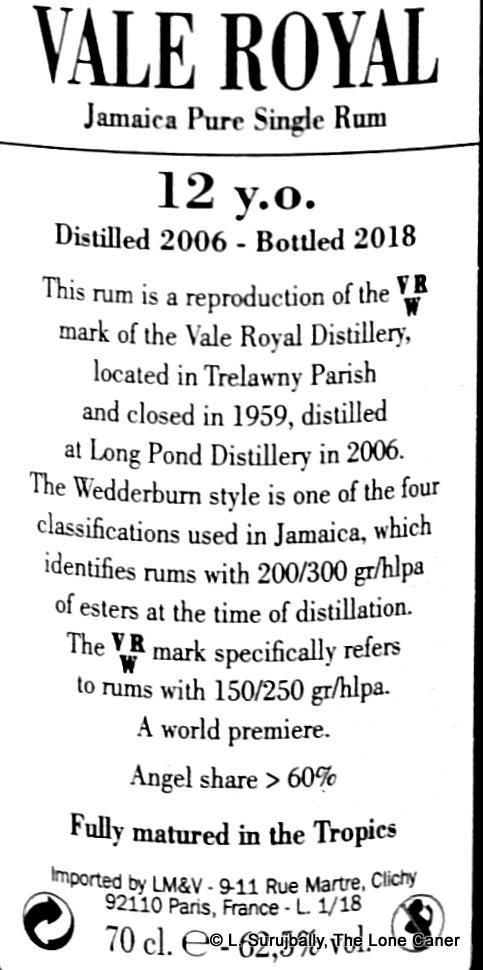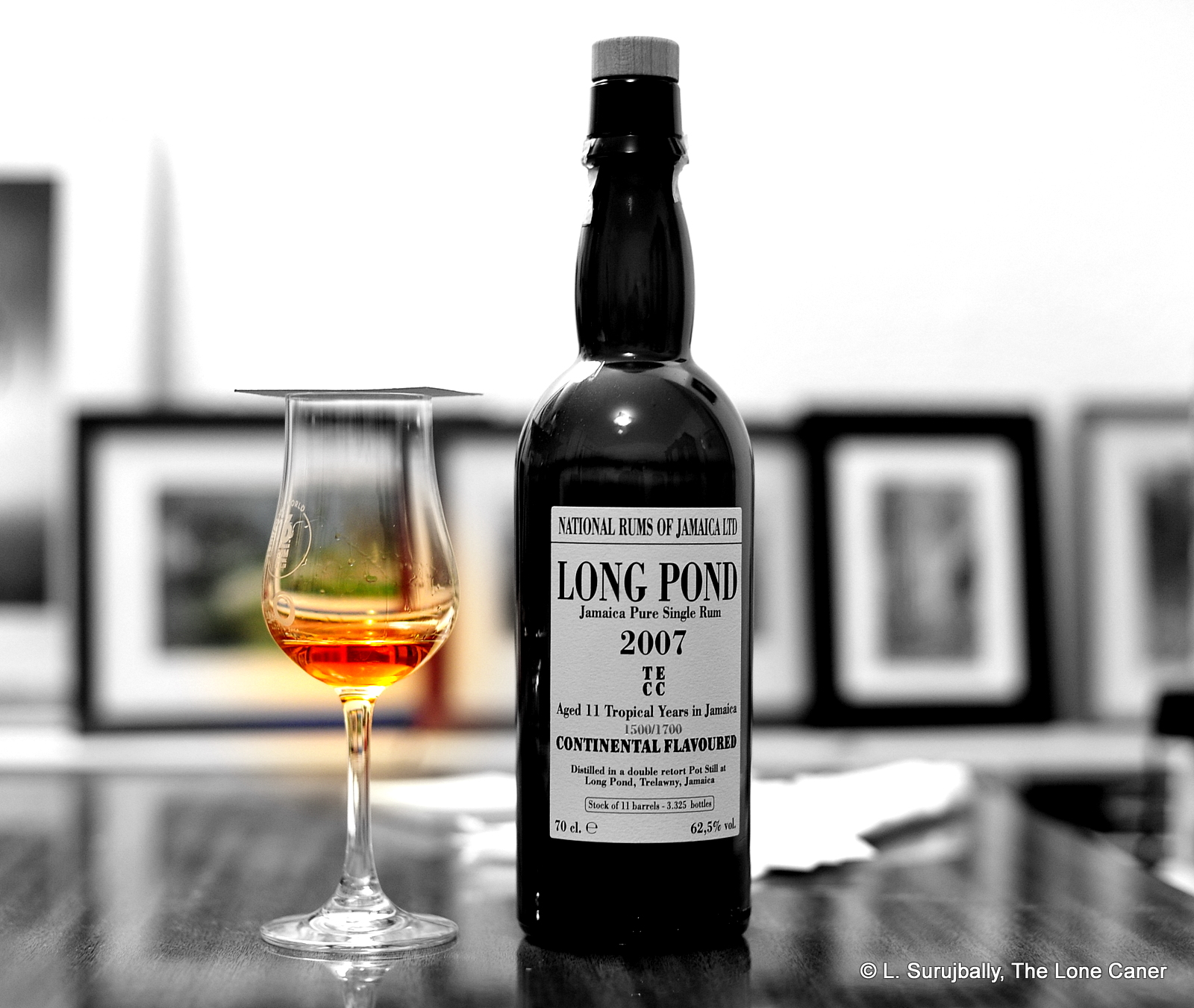
So now we are the fourth and last ester-boosted rums issued in 2018 by Velier from the distillery of Long Pond in Jamaica, and in a strange way it sums up the preceding three rums in a way that emphasizes many of the best parts and tones down the excesses of all of them. This is all the more curious a statement since it has the highest ester counts of the quartet, and one would expect the massive taste-bomb effluent of the TECA to be jacked up a few notches more…to “12”, maybe. And yet it doesn’t. It’s a really interesting rum.
By now the background of this series of rums is covered in the previous three reviews (see other notes below for the recap), so here we can just dive straight in, pausing only to note that this rum is of the category “Continental Flavoured,” has 1500 g/hlpa, the highest of the series, and that would make anyone who already tried the decomposing rhino of the TECA a little cautious. No need. It has many of the same components as the TECA, but more tamed and less intense. Again, it started off with aromas of burlap, wet jute sacks, ammonia and acetones, but while present, they much more restrained than before. Furniture polish, rubber, plastic and whiff of that chewy hogo without going over the top. Oh and the fruits – nice and deep without being either too crisp or too sharp. Peaches in syrup, cherries, ripe apples, spoiling mangoes, caramel, toffee, vegetable soup, sweet soya. See what I mean? – it’s actually rather good if one can get past the meatiness of the background, and the funk and dunder are forceful enough to make a statement for themselves but don’t hog the whole show.
The palate was good as well. Strong and sharp, very fruity, with oranges, apples, soursop, unripe strawberries, green grapes and grapefruit offset with softer richer, riper tastes of pineapples and peaches. Vanilla, some very sharp and bitter oaken notes (surpirsing for something so relatively young). You’re still sipping this in the same fragrant hair salon as the TECA — ammonia, nail polish remover, remember those? — but at least it’s not so crowded and the dead dog out back seems to have been removed. Placticene. Also marshmallows, sour cream, and a rather more powerful set of deep musky floral notes than any of the other rums in the series (roses and lilies). Lastly, to finish things off, some licorice and bubble gum, light brine and furniture polish and fruits and funk. All in really good balance, long and fragrant, meaty and chewy without the meat, so to speak.
Because of its toned-down but still expressive nature, I’d have to say this high-ester funk bomb is an enjoyable drink and a Jamaican hogo-lover’s dream, without being quite as approachable to general audiences as the Vale Royal or the Cambridge, which I would suggest are better for those who want to dip their toes into the Jamaicans from Velier without taking a bath in the furious tastes that characterize either the TECA or the TECC. Ivar de Laat from Toronto remarked on the TECA as being a reference rum for him, and he’s probably right about that one, but when it comes to really torqued up rums that want to show off the ripped abs of their massive ester levels, I’d suggest the TECC is probably a better one to appreciate.
(#566)(86/100)
Summing up / Opinion
When it comes down to it, my scores reveal something of my opinions on the four NRJ expressions from Long Pond. I liked the Vale Royal and Cambridge a lot; they were tasty and new and gave a nice background to other Jamaican profiles. The TECA will appeal to diehard core rum-junkies, specifically those who really know and love Jamaicans, can’t get enough of da funk and da hogo and want to see things cranked up to the max (you could argue these are the same kinds of people who go nuts over the high-peat-laden Octomores). The TECC on the other hand might actually be the best one to try if you want elements of all of these rums at once. It’s still a flavour bomb, quite meaty, just not at the level of its older brother.
The audience for the four rums will, I think, be divided into two similar groupings. The easy drinkers and Velier collectors will inevitably be drawn to the first two, the Vale Royal and the Cambridge. Those who have been following Velier for years and sense what Luca has done may well prefer the latter two rums because they will be seen for what they are, examples of reference rums for Jamaica based on near highest ester counts available. Neither side will be right, or wrong.
***
So, clearing away the dishes: as I noted in the first review (the Vale Royal) these four rums are useful to drink as a quartert, one after the other, because they provide insight into how esters can (and do) impact the Jamaican profile (which is not to take away anything from either Hampden or Worthy Park, both of which indulge themselves in similar pursuits). That caution need be exercised is probably a superfluous point to make, not just because of the strength of the rums (62.5%), but because different components of the chemicals provide very different tastes and not all those would be to the liking of everyone. Personally, I think the four NRJ expressions are among the most unique rums ever to come out of Jamaica, running the gamut from drinkable to formidable to certifiable. When Richard Seale remarked a few months ago that the DOK-level rums are not for drinking straight but are meant as flavouring agents, he knew exactly what he was talking about and I can only confirm that these are poster children for the concept.
Like the clairins issued back in 2014, these are meant (I believe) to prove a point, not to please the greatest number of rum drinkers (pointless anyway, given their limited outturn) or to show off a blender’s skill (the Foursquare ECS series have dibs on that already and in any case these are pure pot still rums, not pot/column blends) – they’re a showcase of what Jamaican rums can be. That doesn’t necessarily make them good for everyone (or the best), but man, are they ever original. I can truly and with some emphasis say that I’ve not tried their like before.
And truth to tell, we need original in this world of bland retreads, we need exciting rums, new rums, different rums, made by courageous people who are willing to go right out into the screaming edge of rum production. Such people demonstrate – for good or ill – how varied rums can be, and deserve praise and encouragement, even if we shudder sometimes and draw back from some of their more excessive outturns.
I think what Luca was going for here was not a sipping rum at all – he said as much in an off hand comment in London not too long ago. What he was aiming at was education and demonstration (of both hogo and Long Pond) as well as a sort of fiendish delight in issuing yet another set of rums we haven’t yet seen much of. Has he succeeded? I think so. Leaders in any field must bridge the divide between their personal vision and their adherents’ experiences: bend too far towards the former and one risks losing the audience entirely, tilting too far the other way just makes for more of the same old blah. I think these rums straddle the uneasy space between those two ideals in a way that is nothing short of impressive.
Background notes
(With the exception of the estate section, all remarks here are the same for the four reviews)
This series of essays on the four NRJ rums contains:
- NRJ Vale Royal 2006 12 YO VRW (11 barrels, 3412 bottles) 150/250 esters level
- NRJ Cambridge 2005 13 YO STC❤E (11 barrels, 3648 bottles) 550/700 esters level
- NRJ Long Pond 2003 15 YO TECA (9 barrels, 2484 bottles) 1200/1300 esters level
- NRJ Long Pond 2007 11 YO TECC (11 barrels, 3325 bottles), 1500/1700 esters level + this summary
In brief, these are all rums from Long Pond distillery, and represent distillates with varying levels of esters (I have elected to go in the direction of lowest ester count → highest, in these reviews). Much of the background has been covered already by two people: the Cocktail Wonk himself with his Jamaican estate profiles and related writings, and the first guy through the gate on the four rums, Flo Redbeard of Barrel Aged Thoughts, who has written extensively on them all (in German) in October 2018. As a bonus, note that a bunch of guys sampled and briefly reviewed all four on Rumboom (again, in German) the same week as my own reviews came out, for those who want some comparisons.
The various Jamaican ester marks
These are definitions of ester counts, and while most rums issued in the last ten years make no mention of such statistics, it seems to be a coming thing based on its increasing visibility in marketing and labelling: right now most of this comes from Jamaica, but Reunion’s Savanna also has started mentioning it in its Grand Arôme line of rums. For those who are coming into this subject cold, esters are the chemical compounds responsible for much of a given rum’s flowery and fruity flavours – they are measured in grams per hectoliter of pure alcohol, a hectoliter being 100 liters; a light Cuban style rum can have as little as 20 g/hlpa while an ester gorilla like the DOK can go right up to the legal max of 1600 at which point it’s no longer much of a drinker’s rum, but a flavouring agent for lesser rums. (For good background reading, check out the Wonk’s work on Jamaican funk, here).
Back in the day, the British classified Jamaican rums into four major styles, and many estates took this a few steps further by subdividing the major categories even more:
Standard Classification
- Common Clean 50-150 gr/hlpa
- Plummer 150-200 gr/hlpa
- Wedderburn 200-300 gr/hlpa
- Continental Flavoured 700-1600 gr/hlpa
Exactly who came up with the naming nomenclature, or what those names mean, is something of a historian’s dilemma, and what they call the juice between 301 to 699 gr/hlpa is not noted, but if anyone knows more, drop me a line and I’ll add the info. Note in particular that these counts reflect the esters after distillation but before ageing, so a chemical test might find a differing value if checked after many years’ rest in a barrel.
Long Pond itself sliced and diced and came up with their own ester subdivisions, and the inference seems to be that the initials probably refer to distilleries and estates acquired over the decades, if not centuries. It would also appear that the ester counts on the four bottles do indeed reflect Long Pond’s system, not the standard notation (tables.
RV 0-20
CQV 20-50
LRM 50-90
ITP /LSO 90-120
HJC / LIB 120-150
IRW / VRW 150-250
HHH / OCLP 250-400
LPS 400-550
STC❤E 550-700
TECA 1200-1300
TECB 1300-1400
TECC 1500-1600
The Estate Name:
It’s unclear whether the TECC stands for Tilston Estate, one of the estates that got subsumed into Long Pond in the wave of consolidations in the 1940s and 1950s (this is the theory to which Luca subscribes), or for Trelawny Estates, the umbrella company created in the 1950s before being taken over by the Government and renamed National Rums of Jamaica. This is where some additional research is needed – nobody has written (so far) on the meaning of the “CC”, though given the Long Pond marks listed above, it’s reasonable to suppose it’s Tilston/Trelawny Estate, Continental Type C (as opposed to “A” or “B” with progressively higher ester levels. The various histories of Long Pond written by Barrel Aged Thoughts, the Cocktail Wonk and DuRhum provide useful background reading, though they do not settle the mark designation issue conclusively one way or the other.
Note: National Rums of Jamaica is not an estate or a distillery in and of itself, but is an umbrella company owned by three organizations: the Jamaican Government, Maison Ferrand of France (who got their stake in 2017 when they bought WIRD in Barbados, the original holder of the share Ferrand now hold) and Guyana’s DDL.
